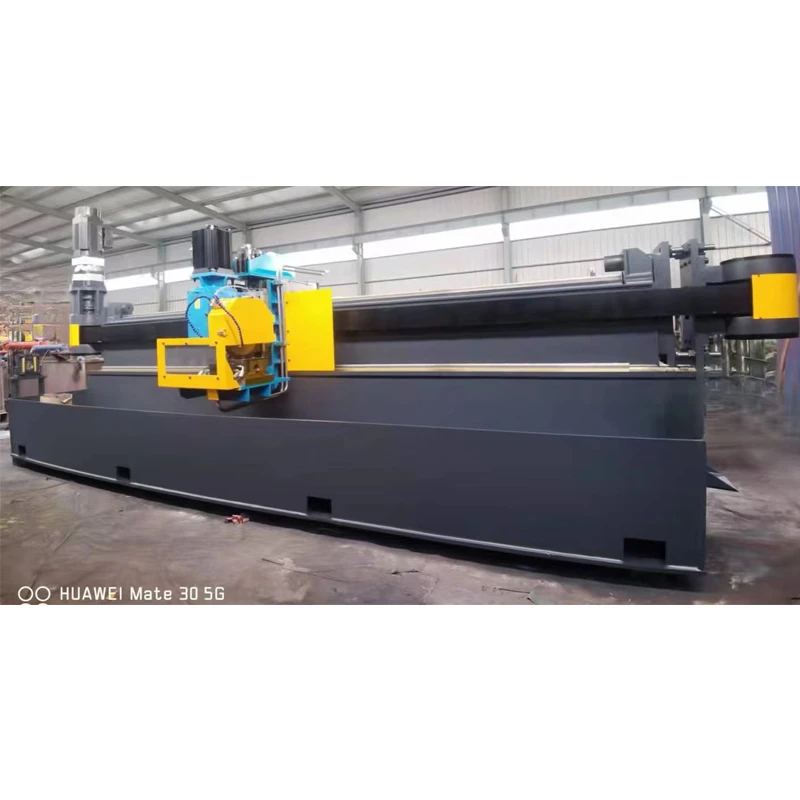standing seam roll forming machine
The Advantages of Standing Seam Roll Forming Machines
In the realm of modern construction, the choice of materials and methods is crucial to ensuring durability, energy efficiency, and aesthetic appeal. One innovation that has gained considerable popularity in recent years is the standing seam roof system, and at the heart of this technology lies the standing seam roll forming machine. This specialized equipment plays a pivotal role in producing the metal panels that form the backbone of these roofing systems.
What is a Standing Seam Roof?
A standing seam roof is characterized by vertical seams that interlock and stand above the roof surface. It is commonly made from metal, providing an ideal solution for both residential and commercial applications. The design promotes efficient water drainage, reduces the risk of leaks, and enhances the overall aesthetic of the building. The standing seam roof system is not only visually appealing but also known for its durability, longevity, and minimal maintenance requirements.
The Role of Roll Forming Machines
Standing seam roll forming machines are engineered to create the intricate metal panels needed for these roofs. The machines use a continuous production process, which involves feeding a metal coil through different sets of rollers that gradually shape the material into the desired profile. This automated method not only improves efficiency but also ensures consistency and precision, which are crucial in producing high-quality roofing panels.
Benefits of Using Standing Seam Roll Forming Machines
1. Efficiency in Production The continuous operation of roll forming machines allows manufacturers to produce large quantities of panels in a short timeframe. This efficiency is especially useful in large-scale construction projects where time is of the essence.
standing seam roll forming machine

2. Material Versatility These machines can work with various metals, including aluminum, steel, and copper, providing flexibility to builders and architects. This versatility allows for customization in terms of color, finish, and thickness, catering to specific design requirements.
3. Cost-Effectiveness While the initial investment in a standing seam roll forming machine may be significant, the long-term benefits include reduced labor costs and waste. Automated production minimizes manual labor and maximizes material yield, lowering overall expenses.
4. Enhanced Durability Standing seam roofs produced with these machines are engineered for strength and resilience. The interlocking seams create a tight seal, mitigating the risks of water infiltration, rust, and thermal expansion. This durability leads to extended lifespans for the roofs, often exceeding 50 years.
5. Aesthetic Flexibility With the ability to fabricate panels in various colors and finishes, standing seam roll forming machines allow architects to push the boundaries of design. This flexibility gives buildings a unique character while often matching or complementing existing architectural styles.
6. Sustainability Modern standing seam roofing solutions are designed with sustainability in mind. Many of the metals used can be recycled multiple times without losing their quality. Additionally, reflective finishes can enhance energy efficiency by reducing heat absorption, contributing to lower energy bills.
Conclusion
The standing seam roll forming machine is not just a tool for manufacturing; it represents a significant advancement in roofing technology. The combination of efficiency, cost-effectiveness, durability, and design flexibility positions standing seam roofs as an excellent choice for a wide range of building projects. As the construction industry continues to evolve, the adoption of standing seam roll forming machines will likely increase, further solidifying the essential role they play in modern architectural design and construction practices. Whether for residential homes or expansive commercial buildings, these machines are paving the way for innovative, reliable, and sustainable roofing solutions.
-
High Frequency Straight Seam Welded Pipe Production Line|BzZhou Xinghua|Precision Welding&EfficiencyNewsJul.30,2025
-
High Frequency Straight Seam Welded Pipe Production Line - BzZhou Xinghua|Precision Engineering&EfficiencyNewsJul.30,2025
-
High-Frequency Straight Seam Welded Pipe Production Line-BzZhou Xinghua Machinery Equipment Manufacturing Co., LTD.NewsJul.30,2025
-
High-Frequency Straight Seam Welded Pipe Production Line-BzZhou Xinghua Machinery Equipment Manufacturing Co., LTD.|Precision Manufacturing, High EfficiencyNewsJul.30,2025
-
High Frequency Straight Seam Welded Pipe Production Line-BzZhou Xinghua Machinery Equipment Manufacturing Co., LTD.|Precision Steel Pipe Manufacturing&Industrial EfficiencyNewsJul.29,2025
-
High-Frequency Straight Seam Welded Pipe Production Line-BzZhou Xinghua Machinery Equipment Manufacturing Co., LTD.|Precision Steel Pipe Manufacturing&Industrial EfficiencyNewsJul.29,2025


